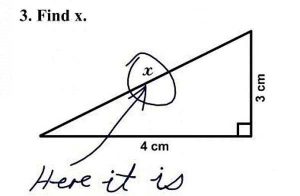OK, I realize this one is pretty easy. A bat and a ball cost $1.10 in total. The bat costs $1.00 more than the ball. How much does the ball cost?
A. 5 cents
B. 10 cents
C. 20 cents
D. 25 cents
If you instinctively guessed 10 cents, congratulations, you are in the majority!
 Unfortunately, the majority of people get this one wrong. In his 2013 book, “David & Goliath”, Malcolm Gladwell cited the Cognitive Reflection Test (CRT). The test, invented by Yale professor Shane Frederick, measures your ability to move past impulsive answers to deeper analytic judgements.
Unfortunately, the majority of people get this one wrong. In his 2013 book, “David & Goliath”, Malcolm Gladwell cited the Cognitive Reflection Test (CRT). The test, invented by Yale professor Shane Frederick, measures your ability to move past impulsive answers to deeper analytic judgements.
By now, you’re probably guessing your initial answer was off the mark. I shared this little “misdirection” with my wife who got annoyed that her answer was wrong and then challenged me to show her the math. That is what we always tell our kids, show us the work. Of course, Gladwell didn’t bother to include any math in his book, he only said 10 cents can’t be right, because then the bat and ball would cost $1.20.
As I watched the Mets game, enjoying a beer, I thought I would devote the necessary 30 seconds to work out the math. About an hour later (I am deeply embarrassed to admit that it took me that long to work out a 3rd grade equation), I came up with it.
Starting at the start, let’s call the ball “X”. OK, then the bat is (X + $1.00). Then the equation becomes:
X + (X + $1.00) = $1.10 OK, let’s add everything up and you get
2X + $1.00 = $1.10 All right, let’s subtract $1.00 from both sides
2X = $0.10 Solve for X by dividing each side by 2 and you get:
X = $0.05 A damn nickel! How do you like that?
Well then, what is the moral of this little misdirection? I have advocated for years that market researchers need to be viewed as problem solvers and not just back office geeks. There’s only one problem with that, if you want to be a problem solver, you can’t sacrifice the sanctity of facts and logic to achieve a quick answer.
As much as I would like to elevate the status of our industry, the truth is we can’t dispense insights until we have our facts straight. My cautionary tale is to remind us that before we can become solution providers, we must first be truth providers.
We need to channel our inner Mr. Spock, start with the math, lay the ground bare, and strip away the obvious.
When there are several variables at play and the researcher has to determine causation and provide recommendations, do we welcome contrarian, (whacky) viewpoints? Are the fact checkers cut from the same cloth as the original report writer? Sometimes we need to revisit the obvious with a fresh mindset.
As researchers, we need to guard against the lure of the obvious answer (e.g., conventional wisdom) that often obscures the obvious truth.
Kevin Lonnie
KL Communications